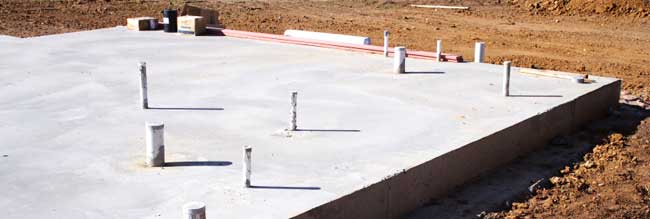Understanding How Lightweight Concrete Works
 The American Society for Testing and Materials (ASTM) is the global reference point for building standards. ASTM standards apply to all manners of building. Two standards are extremely germane to lightweight concrete construction: ASTM F1869, and ASTM F2170. Both ASTM standards apply to moisture testing of concrete, but each reflects a different methodology.
The American Society for Testing and Materials (ASTM) is the global reference point for building standards. ASTM standards apply to all manners of building. Two standards are extremely germane to lightweight concrete construction: ASTM F1869, and ASTM F2170. Both ASTM standards apply to moisture testing of concrete, but each reflects a different methodology.
ASTM F1869 adopts Calcium Chloride testing to quantify the moisture vapor emission rate (MVER) of concrete. This methodology reaches back to the mid-20th century, when builders assessed concrete readiness by assessing moisture in slabs.
ASTM F2170 adopts relative humidity(RH) testing to assess moisture content levels within concrete slabs using in-situ probes. With this addition to ASTM standards, newer methodology acknowledged the internal relative humidity of concrete slabs during drying and curing.
The Method
Calcium chloride testing reads the rate of moisture vapor evaporation at the surface of concrete. Relative humidity testing reads moisture levels down to 40 percent depth within a concrete slab. The difference is highly significant. RH testing assesses moisture at a scientifically specified points within the slab. This allows for a better predictor of what the surface condition will be once a finished floor product is installed. Moisture evaporation rates at the surface may differ greatly from the moisture content within concrete. The MVER (calcium chloride) method assess provides only a superficial moisture snapshot. Knowing the RH can save money and time by allowing more installation critical information to be obtained. The methodological divide affects not only concrete, but adhesives and surface flooring applications.
The Lightweight Concrete Era
Now, throw in the complexities of lightweight concrete. It streamlines the traditional weight-is-strength imperative due to the use of varying admixtures and aggregates. Each component of lightweight concrete can contain different moisture absorption rates, which means increased drying time for such a slab. The same mixes may contain air voids which make lightweight concrete drying and moisture content even less predictable.
Dry Run
Let’s take a hypothetical. Architects design a building with lightweight concrete composed with a very diverse aggregate mix. The slab is poured and finished. The flooring contractor, after some time, begins CaCl testing and RH testing. The moisture vapor emission rate differs from the RH testing result, painting a much different picture for the flooring installer.
Calcium chloride measures the state of surface moisture evaporation; RH testing measures the rate of moisture evaporation from lightweight concrete. MVER provides a snapshot; relative humidity provides a portrait.
Which test result should you recognize? ASTM standards have invalidated MVER in favor of RH testing for lightweight concrete applications. ASTM F2170 exists for that reason. Also, RH testing, by definition, recognizes that relative humidity surrounding the slab affects its equilibration time. In effect, MVER estimates only a small portion of what RH tests assess: the whole concrete slab.